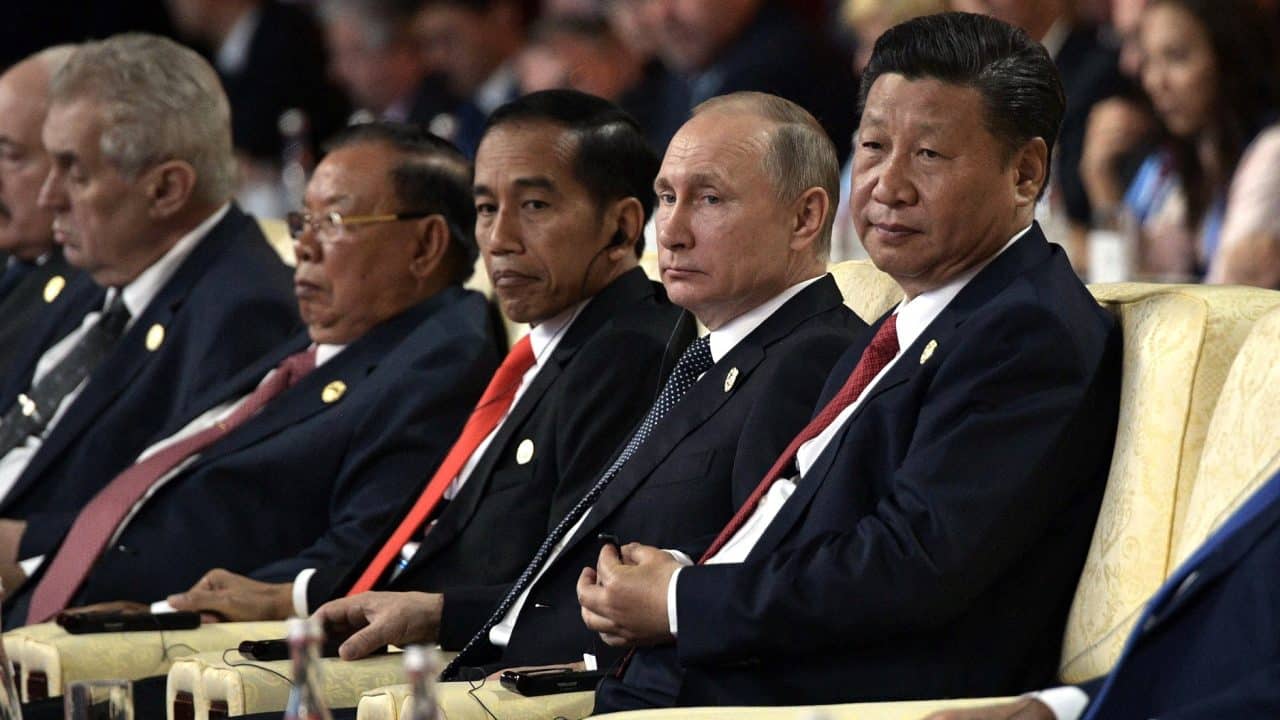This article examines a different perspective on capital structure than traditional business and financial management sources provide and puts it in a global security viewpoint. Bringham and Ehrhardt (2016) and many other scholarly articles addressing this topic tend to have a very American or Western-centric outlook and concentrate predominately on only corporate or business dealings. However, one should also consider states’ capital structure, debt ratios, and the stability and security implications of these financial management practices, especially in the developing world and other weaker economies.
China’s Belt Road Initiative (BRI) seeks to create neoteric Silk Road economic corridors throughout Asia and parts of Europe and East Africa. China has been focusing on physical and digital infrastructure projects it touts as an economic win-win for all the countries involved in the six corridors. However, it has become increasingly apparent that China is utilizing the BRI as a form of “debt trap diplomacy” to develop dual-use infrastructure projects to establish hegemonic influence in the respective regions (Bowen, 2018).
China offers economically weak states seemingly favorable loan rates to fund these BRI projects, such as seaports, railways, and airports. Still, the BRI investments are often not commercially or financially viable enough for those states to adequately service the loans resulting in some form of debt distress that strengthens China’s holding on those projects (Russel & Berger, 2020). The Modigliani and Miller Model would be more applicable in these BRI cases than traditional corporation finance management because one could argue that investors (China and its state-run financial institutions) can borrow at the same rate as corporations. Similarly, all investors (the Chinese state-owned enterprises or SOEs) have the same information as management about the firm’s future investment opportunities, and taxes do not necessarily apply to these transactions (Brigham & Ehrhardt, 2016).

Belt and Road international forum. Right to left: President of China Xi Jinping, President of Russia Vladimir Putin, President of Indonesia Joko Widodo. 14 May 2017 Source.
In closing, China and its SOEs can leverage these debts held by the vulnerable, debt-distressed states, especially post-Covid, to gain strategic advantage throughout the Indio-Pacific region and in Africa. For example, the Hambantota port in Sri Lanka, arguably the only BRI debt for equity seizure, poses a new challenge for Indian military planners to account for in its defense strategies (Russel & Berger, 2020). Similarly, BRI water and rail projects in Djibouti allowed for the establishment of a PLA (People’s Liberation Army) Logistics Support Base in the main shipping corridor between the Red Sea and the Gulf of Aiden as part of a debt restructuring plan (USCC, 2020).
Additionally, a recent 8.5 million dollar BRI investment for a joint security and intelligence outpost in Tajikistan raises significant security concerns in Central Asia, especially with the likelihood of that country defaulting and its considerable mineral reserves China could leverage for nonpayment. The Chinese BRI is where the capital structure subject can have global security and intelligence implications when viewed outside the corporate finance lens.
References:
Bowen, J. (2018). Too big to ignore: Assessing the strategic implications of China’s Belt and Road initiative. Australian Strategic Policy Institute. https://s3-ap-southeast-2.amazonaws.com/ad-aspi/2018-08/SR%20125%20Too%20big%20to%20ignore_2.pdf?DgXUUy9BCjr4UyQhhUBzL3t8UUxx8U4P
Brigham, E. F., & Ehrhardt, M. C. (2016). Financial Management: Theory & Practice (15th Edition). Cengage Learning U.S.
Parker, S., & Chefitz, G. (2018). Debtbook diplomacy: China’s strategic leveraging of its newfound economic influence and the consequences for U.S. foreign policy. Harvard Kennedy School. https://www.hsdl.org/?view&did=811437
Russel, D., & Berger, B. (2020). Weaponizing the Belt and Road Initiative. Asia Society Policy Institute. https://asiasociety.org/sites/default/files/2020-09/Weaponizing%20the%20Belt%20and%20Road%20Initiative_0.pdf
USCC. (2020). China’s strategic aims in Africa. U.S.-China Economic AND Security Review Commission. https://www.uscc.gov/sites/default/files/2020-12/Chapter_1_Section_3–Chinas_Strategic_Aims_in_Africa.pdf
_______________________________
Ben Varlese is a former U.S. Army Mountain Infantry Platoon Sergeant and served in domestic and overseas roles from 2001-2018, including, from 2003-2005, as a sniper section leader. Besides his military service, Ben worked on the U.S. Ambassador to Iraq’s protective security detail in various roles, and since 2018, he has also provided security consulting services for public and private sectors, including tactical training, physical and information security, executive protection, protective intelligence, risk management, insider threat mitigation, and anti-terrorism. He earned a B.A. and an M.A. in Intelligence Studies from American Military University, a graduate certificate in Cyber Security from Colorado State University, and is currently in his second year of AMU’s Doctorate of Global Security program.
As the Voice of the Veteran Community, The Havok Journal seeks to publish a variety of perspectives on a number of sensitive subjects. Unless specifically noted otherwise, nothing we publish is an official point of view of The Havok Journal or any part of the U.S. government.
Buy Me A Coffee
The Havok Journal seeks to serve as a voice of the Veteran and First Responder communities through a focus on current affairs and articles of interest to the public in general, and the veteran community in particular. We strive to offer timely, current, and informative content, with the occasional piece focused on entertainment. We are continually expanding and striving to improve the readers’ experience.
© 2024 The Havok Journal
The Havok Journal welcomes re-posting of our original content as long as it is done in compliance with our Terms of Use.



